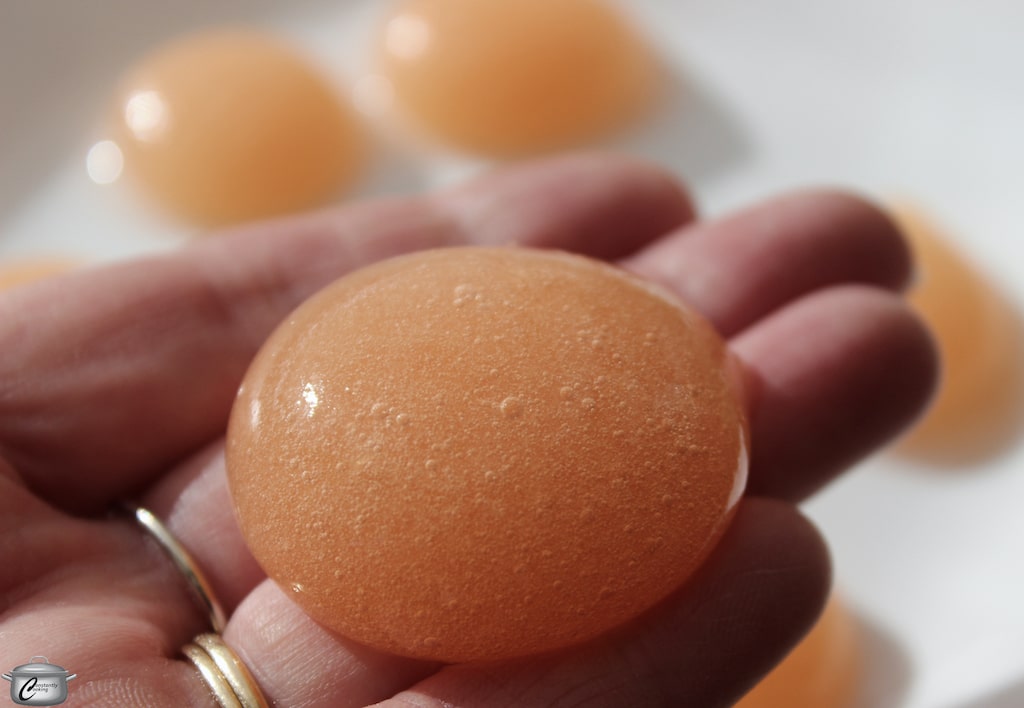This is a fun kitchen science project that can add a huge wow factor to almost any dish you serve. Molecular gastronomy – sometimes called modernist cuisine – isn’t just for adults, however, as it is the kind of delicious science that kids of all ages seem to really enjoy. The littlest ones can watch and then play with – and eat – the results, although older children and teens can probably follow this recipe all by themselves. While kids (and even some adults) may not be familiar with the term “molecular gastronomy,” if you tell them they’re going to take a liquid and turn it into little jelly-like bubbles they can hold in their hand and then eat, you’re sure to capture their attention.
The science behind this neat trick is called spherification and it is commonly used in many restaurants today because it’s one of the easiest techniques in the molecular gastronomy toolbox. I’ve enjoyed finding little pearls or bubbles of beet juice, green tea, watermelon, sriracha, balsamic, grapefruit and more on restaurant plates over the past few years.
You only need a few simple ingredients and tools to conduct this experiment, outlined below. If you’re using water instead of juice, it might be fun to add a drop or two of food coloring so the experiment is more visually appealing. You can find the two necessary food-grade chemicals, both of which are naturally derived, online or at local molecular gastronomy supply shops. Sources in Canada include Powder for Texture and Nella Cucina; in the United States visit Modernist Pantry’s online shop, which also ships worldwide.
If you’re looking for other fun and extremely easy edible science experiments, check out this rock candy recipe and the instructions for making potato chips in the microwave.
